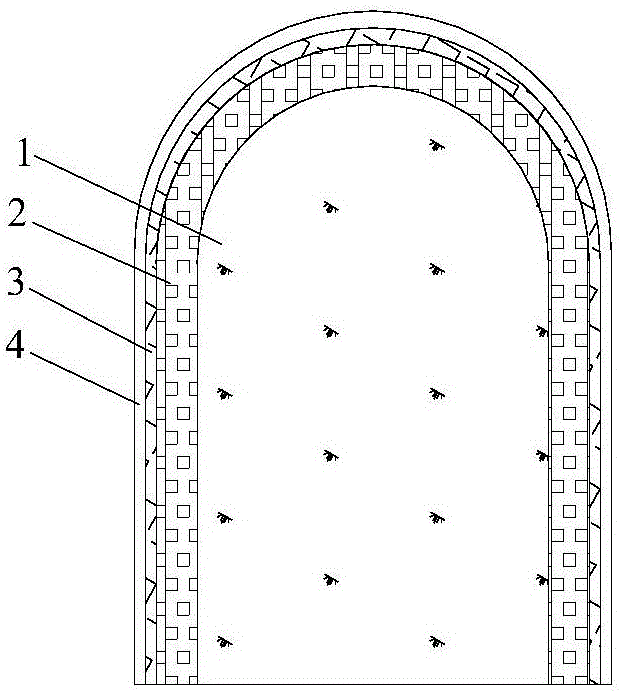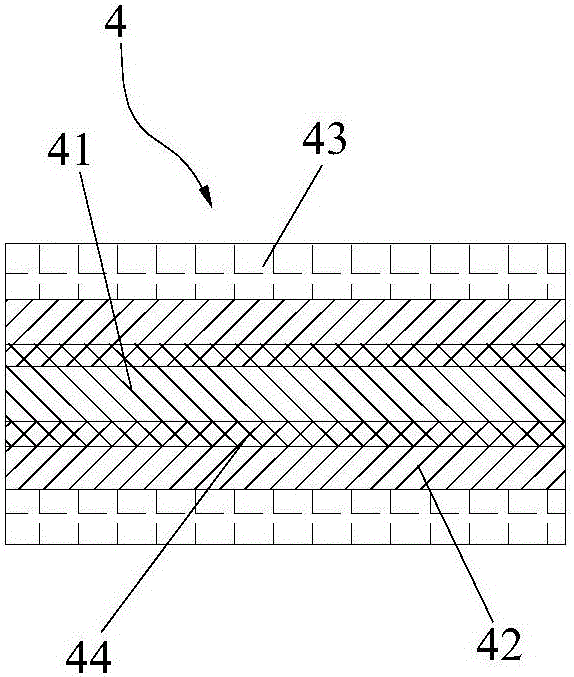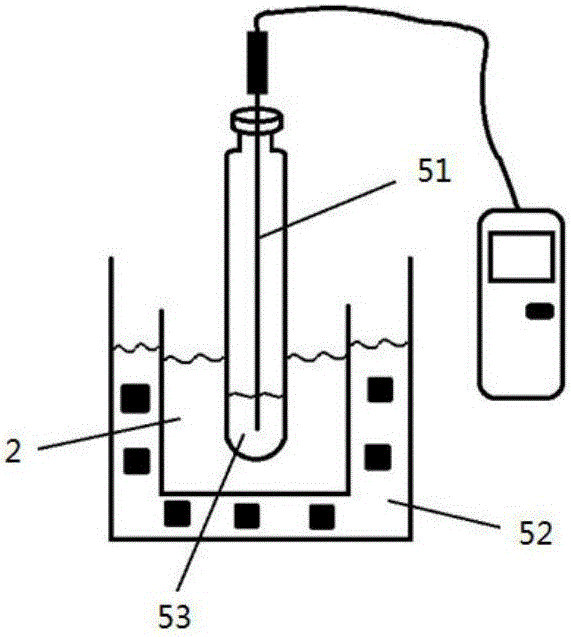Phase change heat storage biogas device for increasing solar energy utilization rate
A phase change heat storage and biogas device technology, applied in solar thermal devices, solar thermal energy, solar thermal power generation, etc., can solve the problems of reduced biogas production, affecting people's use, insufficient fermentation, etc., to improve the crystallization effect and increase production. The effect of gas continuity and improving light absorption efficiency
- Summary
- Abstract
- Description
- Claims
- Application Information
AI Technical Summary
Problems solved by technology
Method used
Image
Examples
Embodiment 1
[0041] Embodiment 1: The phase change material is disodium hydrogen phosphate dodecahydrate, such as Figure 4 As shown, the comparison of phase change materials with and without dye added after one day of sunlight exposure, both test tubes were filled with disodium hydrogen phosphate dodecahydrate, and the right test tube was added with dye (concentration of 0.001 g / mL). It can be seen that the material in the test tube on the left is almost not melted, that is, the absorbed light energy is too little and there is not enough heat; while the material in the test tube on the right is almost completely melted, it can be seen that the addition of dyes can make full use of solar energy and greatly improve the The light absorption efficiency of the material, and the dye has a certain viscosity, which can alleviate the phase separation to a certain extent and improve the crystallization effect.
[0042] In addition, an ultraviolet-visible spectrophotometer is used to measure the ph...
Embodiment 2
[0045] Embodiment 2: The phase change material is zinc nitrate hexahydrate
[0046] After the zinc nitrate hexahydrate added with the dye is exposed to the sun for 4 hours, the initial temperature of the phase change material at the time of measurement is 29.4°C, which may be slightly lower due to the second set of measurements. from Figure 8 It can be seen from the step-cooling curve above that the phase change material does not start to heat up until the temperature drops to 26.8°C during the cooling process, and the temperature rises from 26.8°C to 30.7°C. The theoretical phase transition temperature of zinc nitrate hexahydrate is calculated at 36.4°C, and the supercooling degree of the overall material after adding the dye is 9.6°C. By comparing with the previously measured step-cooling curve of zinc nitrate hexahydrate, it can be considered that adding 5% The dye can slightly reduce the undercooling of zinc nitrate hexahydrate, about 3-4 ℃ undercooling. In addition, th...
Embodiment 3
[0047] Example 3: The phase change material is calcium chloride hexahydrate, adding 5% water and mixing it with dye
[0048] Similar to the previous measurement of the step cooling curve of the mixture of calcium chloride hexahydrate and hydrate, the phase transition temperature and other properties of calcium chloride hexahydrate were improved by adding 5% water.
[0049] Calcium chloride hexahydrate added with dye fully absorbs light energy after being exposed to the sun for 4 hours. The initial temperature of the phase change material during measurement is 32.2° C., and the phase change material is completely melted. from Figure 10 From the step-cooling curve above, it can be seen that the temperature rise process occurs when the temperature of the phase change material drops to 26.8°C during the cooling process, and the temperature of the phase change material decreases slowly after exothermic heating from 26.8°C to 30.1°C. Figure 11 It is the crystallization state of ...
PUM
 Login to View More
Login to View More Abstract
Description
Claims
Application Information
 Login to View More
Login to View More - R&D
- Intellectual Property
- Life Sciences
- Materials
- Tech Scout
- Unparalleled Data Quality
- Higher Quality Content
- 60% Fewer Hallucinations
Browse by: Latest US Patents, China's latest patents, Technical Efficacy Thesaurus, Application Domain, Technology Topic, Popular Technical Reports.
© 2025 PatSnap. All rights reserved.Legal|Privacy policy|Modern Slavery Act Transparency Statement|Sitemap|About US| Contact US: help@patsnap.com



